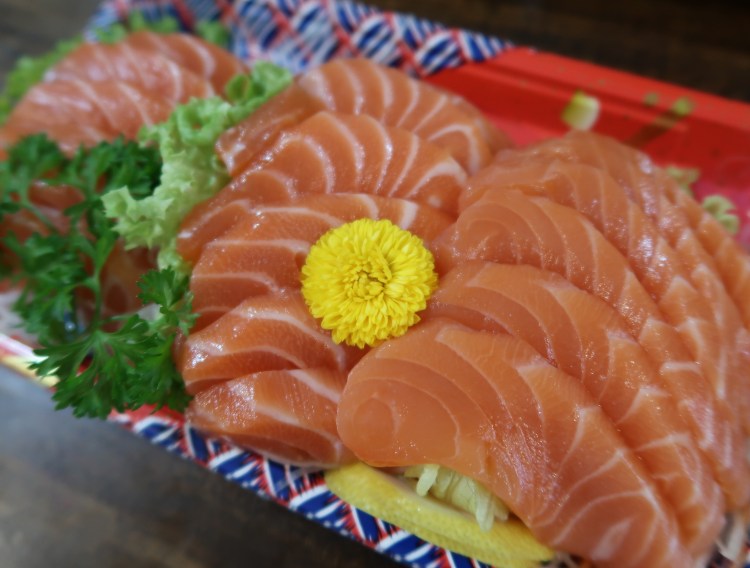Sashimi Delivery Singapore services have grown in demand during the COVID-19 shutdown. Many people craving sashimi are choosing to order from digital vendors. Yet, without professional chefs, consumers are concerned over what to order and how to check their quality. In this article, we cover both queries.
Kinds of Sashimi
Sashimi entails a wide range of fish cut into fragile items and set up skillfully onto the place. The lovely aspect of sashimi is that also one sort of fish can taste different depending upon the blade techniques made use of by the cook.
There are several favorite sashimi fish. Sashimi can be found in a wide array of kinds of fish and shellfish and commonly more than one sort of fish on a solitary plate. The most popular kinds of sashimi are tuna, salmon, and mackerel. You can also find shellfish and various other kinds of fish on your plate like scallops sashimi, crab sashimi, and also octopus sashimi.
Salmon
When you are purchasing fish for raw intake, you should constantly pick farmed salmon as opposed to the ones that grow in wild habitat. As the wild salmon invests a considerable part of their lifespan in fresh water, there is a higher risk of them getting parasites. Farm-raised salmon is given a parasite-free diet plan, therefore they are relatively safe.
Yellowtail
Referred to as hamachi in Japanese, the yellowtail fish is a popular ingredient used in nigiri and maki rolls. Although it contains less risk of parasitical contamination, the uncooked meat of hamachi can be dense in mercury, so make sure you consume it in moderation.
Halibut or Flounder
This is typically referred to as Hirame in Japanese, yet once again this fish has a low risk of harmful miceo-organisms for this reason sushi-grade suffices to put your concerns to bed.
Saba or Aji Mackerel
This species of fish is marinaded with vinegar before serving. While there is a reduced risk of parasites, it may be high in mercury.
Seabass
Frequently described as Suzuki or tai, the raw flesh of this fish is always cured with vinegar. It may contain a high portion of mercury, for this reason it needs to be eaten in small amounts.
How to tell if Sushi is inedible, stale or spoiled?
Exercising appropriate health and food safety strategies will aid protect against foodborne health problem. Basically if it smells at all like fish, it is too old to eat raw … keep in mind, 1 day. There are, naturally, certain health threats related to spoiled foods so constantly remember to exercise food security and enjoy your foods prior to their life span has ended!
Currently picture you have a package of sushi in your refrigerator and after you compute the time you understand that your leftover sushi is rapidly coming close to hour 25. What do you do?
Initially, remember of the colour and the smell. If it smells fishy or perhaps a bit strange to you, do not risk it and simply throw it out. If the color of the sushi looks a little bit worn-out or just different from what you remember when the staff member carried it out, best to toss it out. If it has a little mold and mildew (ew!) or has some scum, it’s time to chuck it in the bin.

 Key Design Considerations for an Efficient Food Cold Room
Key Design Considerations for an Efficient Food Cold Room  A Thoughtful Guide to Wine Gifting for Mother’s Day and Beyond
A Thoughtful Guide to Wine Gifting for Mother’s Day and Beyond  How to Deep Fry Without a Deep Fryer Basket: Alternatives
How to Deep Fry Without a Deep Fryer Basket: Alternatives  Delicious Ways Pizza Drives Children to Achieve Success
Delicious Ways Pizza Drives Children to Achieve Success  Elevating Retail Offerings with Weaver Nut Company’s Premier Candy Solutions
Elevating Retail Offerings with Weaver Nut Company’s Premier Candy Solutions  Discovering the Differences Between Light and Dark Roasts
Discovering the Differences Between Light and Dark Roasts  Exploring Different Types of Latin-Style Barbecues
Exploring Different Types of Latin-Style Barbecues  What are the Benefits of Using a Narrow Electric Cooktop in a Small or Compact Kitchen?
What are the Benefits of Using a Narrow Electric Cooktop in a Small or Compact Kitchen? 


